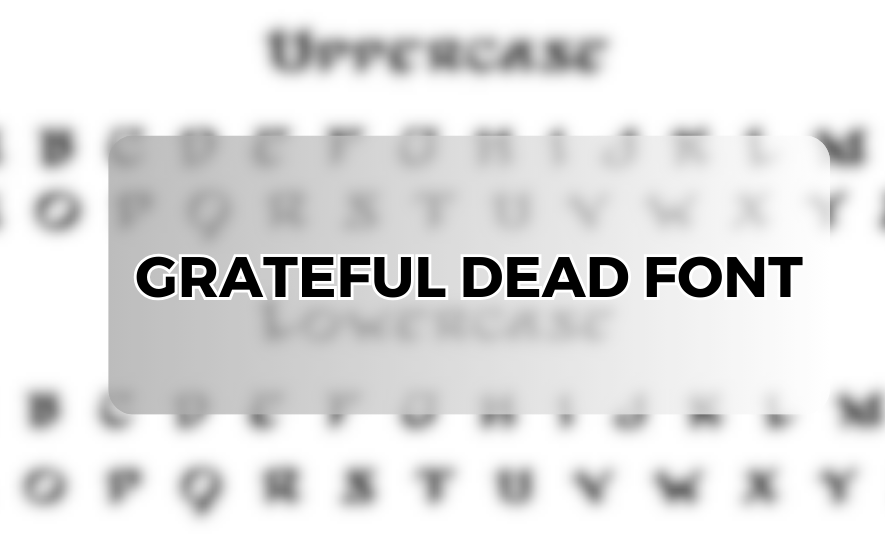Introduction:
In the realm of music and art, certain symbols and styles become emblematic of entire movements or bands. One such symbol is the distinctive font associated with the Grateful Dead. More than just a typeface, it has become an integral part of the band’s identity, evoking a sense of nostalgia and countercultural spirit. Let’s delve into the history and significance of the Grateful Dead font, exploring its enduring appeal and cultural impact.
1. Origins of the Grateful Dead Font:
The Grateful Dead font, often referred to as “Skeleton Font” or “Skeleton and Roses Font,” first appeared on the band’s self-titled album cover in 1967.
Designed by Stanley Mouse and Alton Kelley, the font features intricate lettering intertwined with skeletal motifs, reflecting the band’s psychedelic aesthetic and themes of mortality.
Inspired by the Mexican holiday Día de los Muertos (Day of the Dead) and the artwork of 19th-century illustrator Edmund Joseph Sullivan, the font captures the spirit of rebellion and transformation.
2. Evolution and Variations:
Over the years, the Grateful Dead font underwent subtle variations, adapting to different album covers, posters, and merchandise.
Each iteration retained the core elements of skeletal imagery and intricate lettering, but artists and designers added their own interpretations, keeping the font fresh and dynamic.
Despite these variations, the essence of the font remained consistent, serving as a visual representation of the band’s ethos and musical style.
3. Cultural Impact:
Beyond its association with the Grateful Dead, the font became synonymous with the broader counterculture movement of the 1960s and 1970s.
Its bold, unconventional design challenged traditional typographic norms, embodying the spirit of experimentation and nonconformity.
As the Grateful Dead gained a devoted following known as “Deadheads,” the font became a rallying symbol for a community united by music, art, and shared values.
4. Legacy and Influence:
Even after the disbandment of the Grateful Dead following Jerry Garcia’s death in 1995, the font continued to resonate with fans old and new.
Its enduring popularity inspired countless imitations and tributes, cementing its status as an iconic piece of graphic design.
From concert posters to album reissues to merchandise, the Grateful Dead font remains a staple in popular culture, serving as a visual bridge to a bygone era of peace, love, and rock ‘n’ roll.
5. Conclusion:
The Grateful Dead font stands as a testament to the power of music and art to transcend generations and capture the imagination of millions.
Its intricate design and rich symbolism embody the spirit of creativity, individuality, and collective consciousness that define the Grateful Dead and their enduring legacy.
Whether emblazoned on a concert poster or tattooed on a fan’s skin, the Grateful Dead font continues to inspire awe and reverence, reminding us of the timeless allure of a band that dared to defy convention and march to the beat of their own drum.




